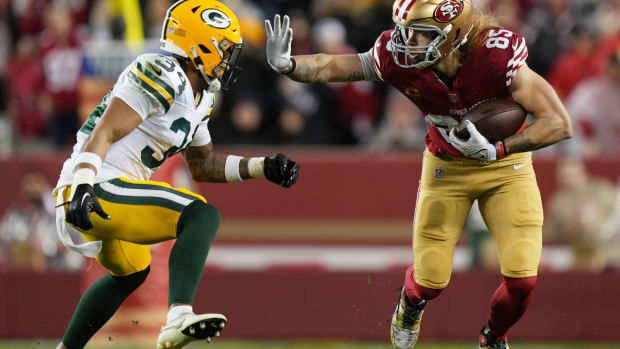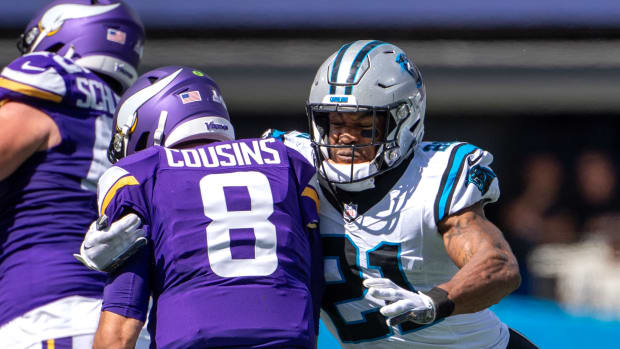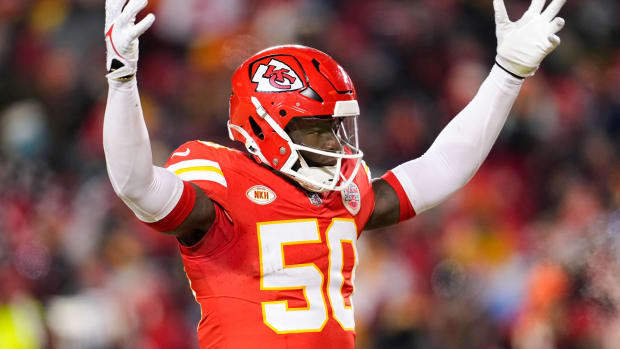How Belichick’s Defense Evolved
Thirteen years ago, the Patriots won their third Super Bowls in four years, joining the 1960s Packers, 70s Steelers, 80s Niners and 90s Cowboys in dynastic lore. The success of those previous dynasties was easy to understand. Those teams had Hall of Fame quarterbacks, superstar skill players, esteemed coaches and playmaking defenders. The Patriots were a motley crew of nobodies. Tom Brady, a 2000 sixth-round pick, still didn’t yet look like a superstar, let alone a legend. His best weapons were glorified role players—guys like Kevin Faulk, Troy Brown and Deion Branch. Head coach Bill Belichick was getting freshly recognized as a “genius,” but only because he’d fielded the NFL’s best defense over that span despite a paucity of dynamic pieces.
What Belichick’s defense did have was an abundance of smart, savvy veterans: Rodney Harrison, Tedy Bruschi, Roman Phifer, Ty Law, Willie McGinest, Tyrone Poole, Mike Vrabel, Bobby Hamilton, Ted Washington, Ted Johnson, Keith Traylor and, for that first Super Bowl, Otis Smith, Anthony Pleasant, Lawyer Milloy and Bryan Cox.
Few of these men were great athletes, but schematically, they could do whatever Belichick concocted. And, with so many “coaches” on the field, Belichick concocted a lot. His Patriots were known for being a certain defense one week and a totally different defense the next. They could run any coverage, play out of any structure—be it 4-3, 3-4 or a blend—and disguise pressures and post-snap rotations like none other.
The success from this diverse approach not only set, but cemented Belichick’s reputation, even though it was counter to the coach’s nature. As Jenny Vrentas explained in her terrific story on the friendship of Belichick and Nick Saban, Belichick in his formative coaching years preferred to run a two-gap 3-4 front with Cover 2 behind it. That’s the most basic and conservative defense known to football. The complex, multifaceted scheming of the early 2000s was a changeup for Belichick, implemented for that veteran Patriots D.
A win on Sunday will give Belichick, incredibly, a second dynasty (three titles in four years), this one with a totally different style of defense. The reputation from the first dynasty settled deep enough that few have noticed: Belichick’s defense is, and has been for roughly 10 years, a simple bend-but-don’t-break unit. The Super Bowl champion 2014 Patriots ranked 13th in yards allowed but eighth in points given up. The 2016 Patriots were eighth in yards but first in points. This year’s Patriots were 29th in yards but fifth in points (and first in points over the season’s final three-quarters).
It’s not just the numbers; the Patriots on film look very “bend-don’t-break.” They play a lot of straight man coverage, often with one safety deep and the other robbing over the middle. They blitz rarely, even though some NFL coaches believe that coordinator Matt Patricia is the only defensive play-caller who truly understands every opponent’s pass protection rules. Their D-line does little stunting and slanting after the snap, and even presnap disguises can be few and far between. When the Patriots do get aggressive is usually when the offense approaches scoring range. That’s the “don’t break” part.
When you’re schematically voluminous, players’ versatility and IQ trumps athleticism. When you’re schematically straightforward, and especially out of man coverage—like the recent Patriots—athleticism is crucial. That’s why every regular contributor in New England’s secondary was drafted in the second round or higher (save for safety Duron Harmon, who was taken in the third, and Malcolm Butler, who was undrafted and later emerged as a No. 1 corner).
While man coverage is an aggressive, proactive approach, New England’s front-seven strategies tend to be based more in reading and reacting. Which explains (in part) why the only early-round draft picks are 2015 first-round defensive tackle Malcom Brown and Lions 2014 second-round pick Kyle Van Noy. (Stud linebacker Dont’a Hightower was also a first-round pick but has been out since October with a torn pectoral.) The rest of the front seven is comprised of disciplined, fundamentally sound talents like Trey Flowers, Lawrence Guy and Marquis Flowers.
One reason for the different approach between the first dynasty and the (potentially) second could be Brady. Remember how he was known as a caretaker in his early years? Fantasy owners derided him for never posting big, sexy numbers like Peyton Manning. Belichick built aggressive, veteran-based defenses to complement an offense that won through field position and minimizing mistakes. In 2007 (arguably the Patriots’ best year ever), Brady morphed into one of history’s most prolific passers, and he’s been that ever since. With a quarterback who can march up and down the field, Belichick doesn’t need a defense that makes plays and swings field position—he just needs a defense that doesn’t give up big plays. Keep this in mind when pondering New England’s gameplan for Eagles fill-in QB Nick Foles on Sunday.
• Question or comment? Email us at talkback@themmqb.com.




































